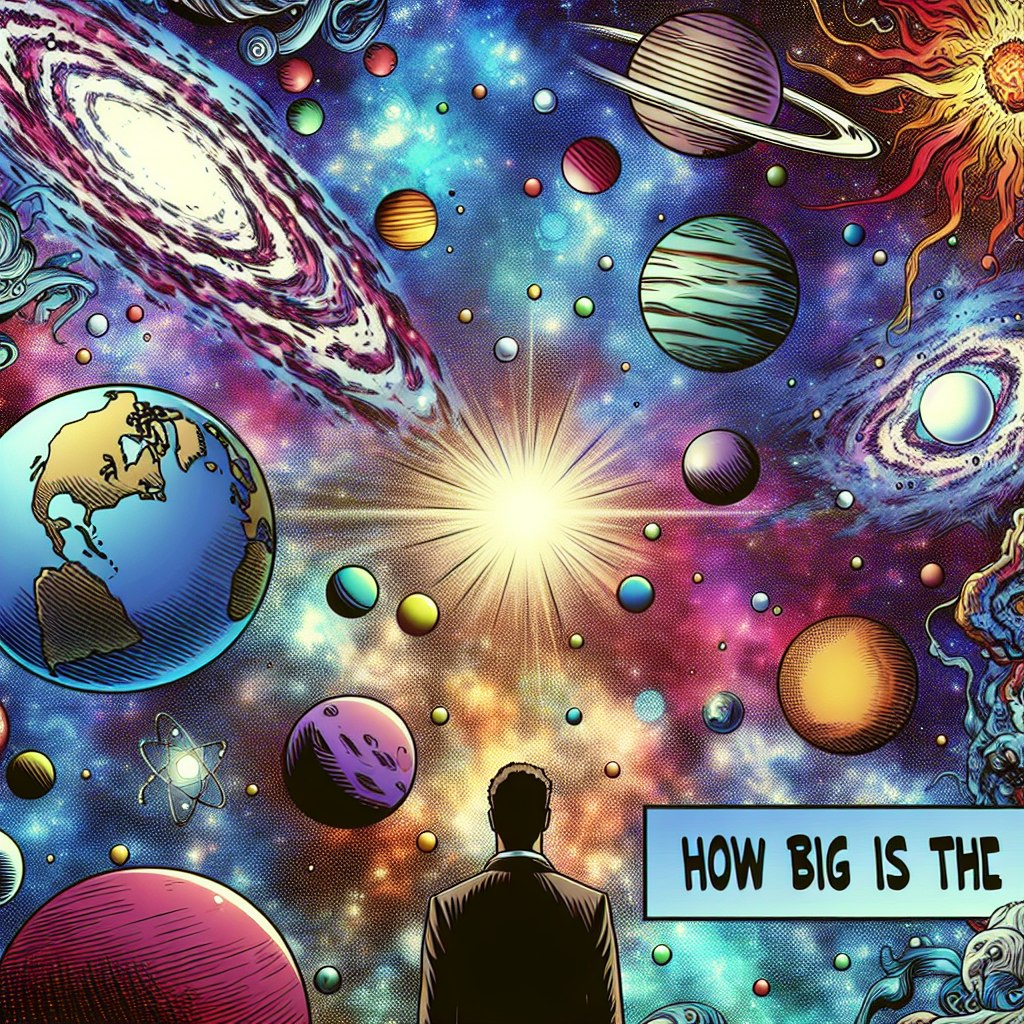The universe is vast, and its size is difficult to wrap your head around. Imagine you're standing on the surface of the Earth, and you're holding a grain of sand. That grain represents our planet, a tiny speck in the grand scheme of things. Now, imagine a beach with an infinite number of identical grains, each one representing a star, and you'll start to get an idea of just how enormous the universe is.
To put it into perspective, if you were to travel at the speed of light (approximately 186,000 miles per second), it would take you about 8 minutes and 20 seconds to reach the Sun from Earth. That's a staggering distance, but it's just a small hop compared to the vast expanse of the universe. If you continued traveling at that speed, it would take you about 4 years to reach the nearest star outside of our solar system, Proxima Centauri, which is a mere 4.24 light-years away.
The Milky Way, our home galaxy, contains hundreds of billions of stars, and it's just one of an estimated 100 to 400 billion galaxies in the observable universe. The observable universe is the part of the universe we can see, and it's estimated to have a diameter of around 93 billion light-years. However, it's thought that there may be many more galaxies beyond what we can observe, making the true size of the universe virtually infinite.
So, how do we even begin to measure the size of something so enormous? Astronomers use a variety of methods, including:
- Parallax measurement: By observing the same star from different points in the Earth's orbit, astronomers can calculate its distance from us. This method is useful for stars within a few hundred parsecs of Earth.
- Main sequence fitting: By comparing the brightness and color of stars in a galaxy to similar stars in our own galaxy, astronomers can estimate the distance to that galaxy.
- Redshift measurement: As light travels through space, it becomes shifted towards the red end of the spectrum, a phenomenon known as redshift. By measuring the redshift of light from distant galaxies, astronomers can infer how fast those galaxies are moving away from us and, therefore, how far away they are.
One way to visualize the size of the universe is to imagine a giant balloon, with galaxies and galaxy clusters stuck to its surface like stickers. As the balloon expands, the galaxies move away from each other, much like how dots on the surface of a balloon would move apart as it inflates. This expansion is thought to have begun during the Big Bang, around 13.8 billion years ago, and it's still happening today.
The rate of this expansion is accelerating, and it's thought to be driven by a mysterious force known as dark energy. Dark energy makes up about 68% of the universe's total energy density, while ordinary matter and radiation make up only about 5%. The remaining 27% is thought to be dark matter, which is invisible and interacts with normal matter only through gravity.
In terms of sheer scale, the universe is almost incomprehensible. Consider that the largest structure in the universe, the supercluster of galaxies, stretches over 5 billion light-years across. That's equivalent to a distance of around 30 quintillion kilometers (18 quintillion miles). To put it another way, if you were to travel at the speed of light, it would take you about 5 billion years to cross just one of these superclusters.
The universe is also incredibly old, with an age of about 13.8 billion years. That's roughly 380,000 times the age of modern human civilization, which is just a tiny blip on the cosmic timeline. The universe has been expanding and evolving over this vast timescale, governed by the laws of physics that we're still working to understand.
Despite its enormity, the universe is surprisingly well-ordered. The laws of physics that govern the behavior of atoms and molecules on Earth are the same laws that govern the behavior of galaxies and galaxy clusters. This is known as the cosmological principle, which states that the universe is homogeneous and isotropic on large scales, meaning it looks the same in all directions and has the same properties everywhere.
The size of the universe raises many questions, such as what lies beyond the observable universe, and what existed before the Big Bang. These are still open questions in the field of cosmology, and scientists continue to explore the universe using cutting-edge technology and innovative methods. As we delve deeper into the mysteries of the universe, we're reminded of the infinite complexity and beauty that lies at the heart of creation.

Popular Space Questions
Find answers to the trending space questions being asked by our community on social media.
- How many galaxies are there in the universe?
- How many planets are in the Milky Way?
- How far is Pluto from Earth?
- What would happen if a rogue planet entered our solar system?
- How many planets are in our solar system?
- How big is the Earth?
- What are the planets in order?
- What if we found a way to manipulate gravity?
- What would happen if a pulsar's beam hit Earth?
- What would happen if a quasar aimed its jet at Earth?